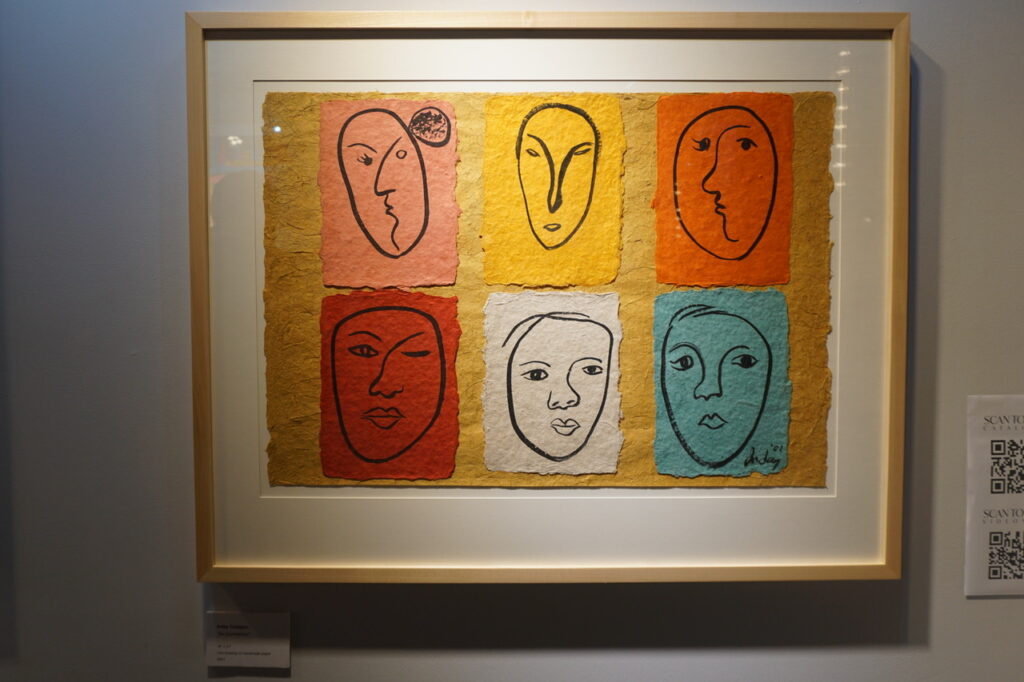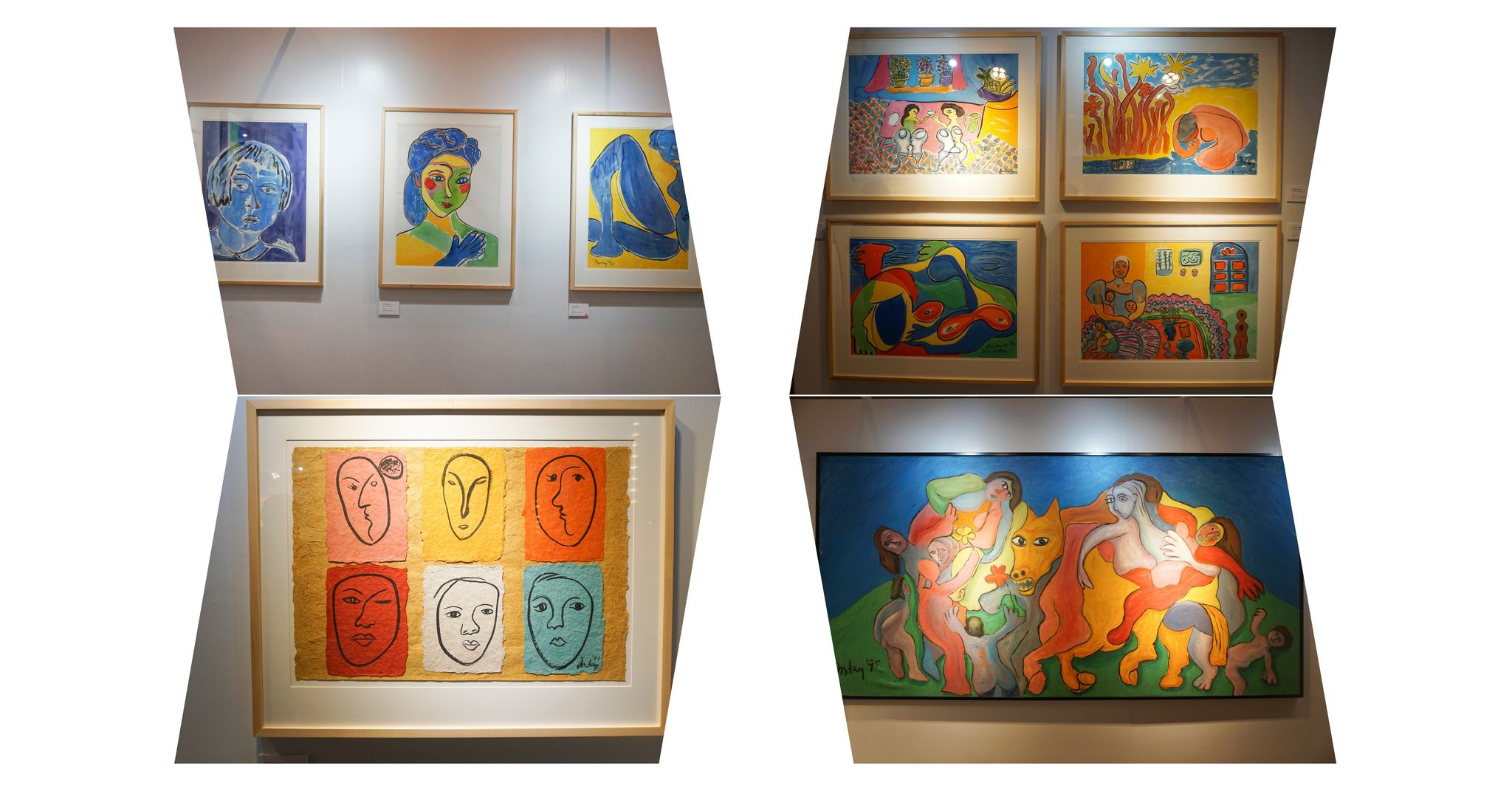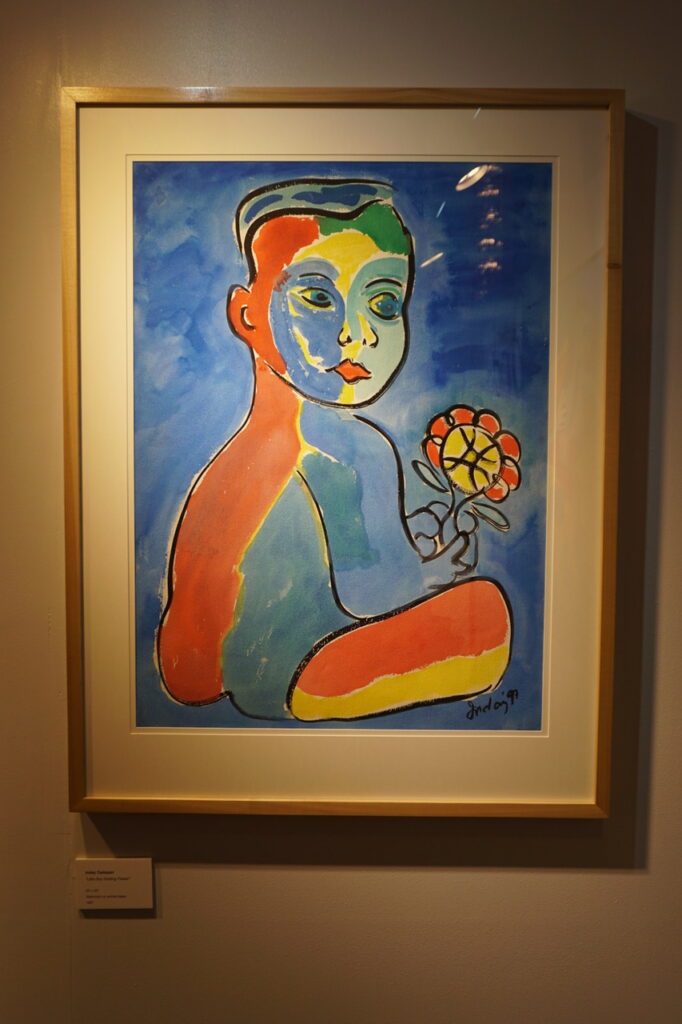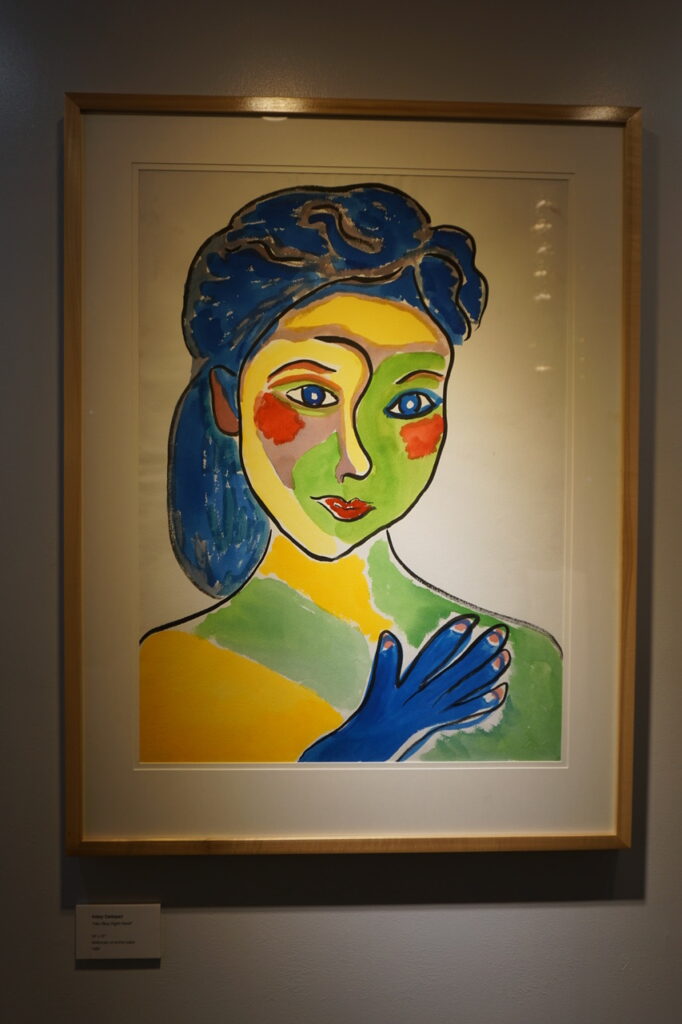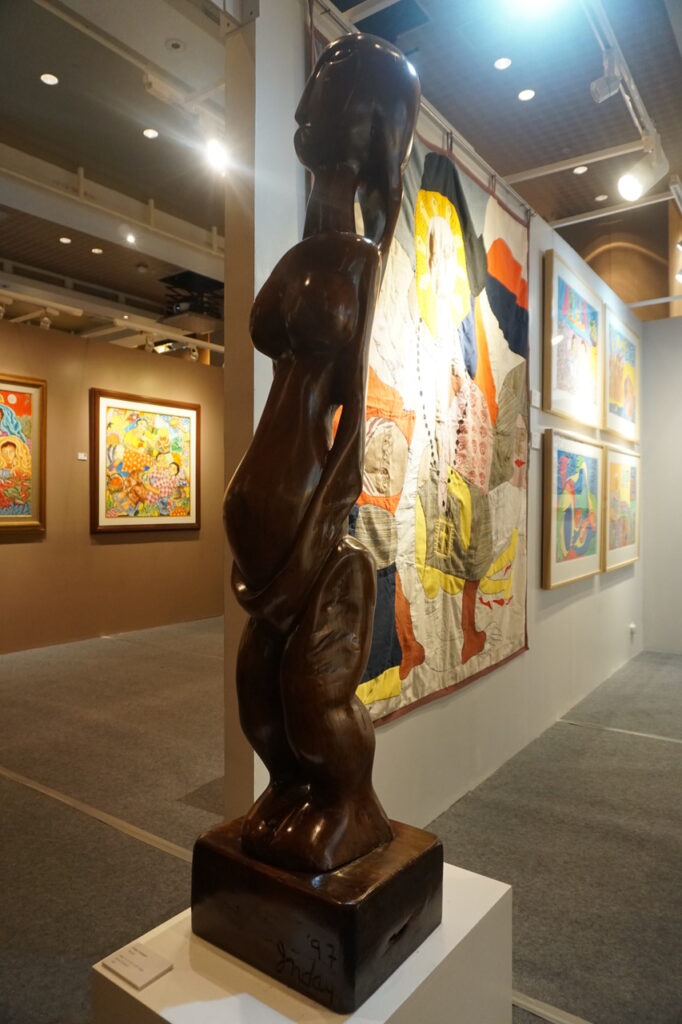Nearly 20 years after her death, artist Elsie “Inday” Reyes-Cadapan’s works still carry with them not just her name, but her views on society and poignant stories of a mother to a child, a grandmother to her grandchildren.
By Reggie Abang
A loud semi-abstract tapestry welcomes you at the Galerie Francesca booth in the Fairmont Makati’s Grand Ballroom. Elsie “Inday” Reyes-Cadapan’s Inang Bayan, and the image of a Filipina made of woven fabric, tells the story of the country under martial law.
Magel, Inday’s only daughter, explained that her late mother recreated the tapestry from her series of acrylic paintings of the same title. It was the third version of Inang Bayan.
The tapestry was one of her artworks showcased at the recently concluded Modern and Contemporary Art Festival (MoCAF) 2022. And despite her passing in 2004, her spirit is very much alive in every painting and sculpture present.
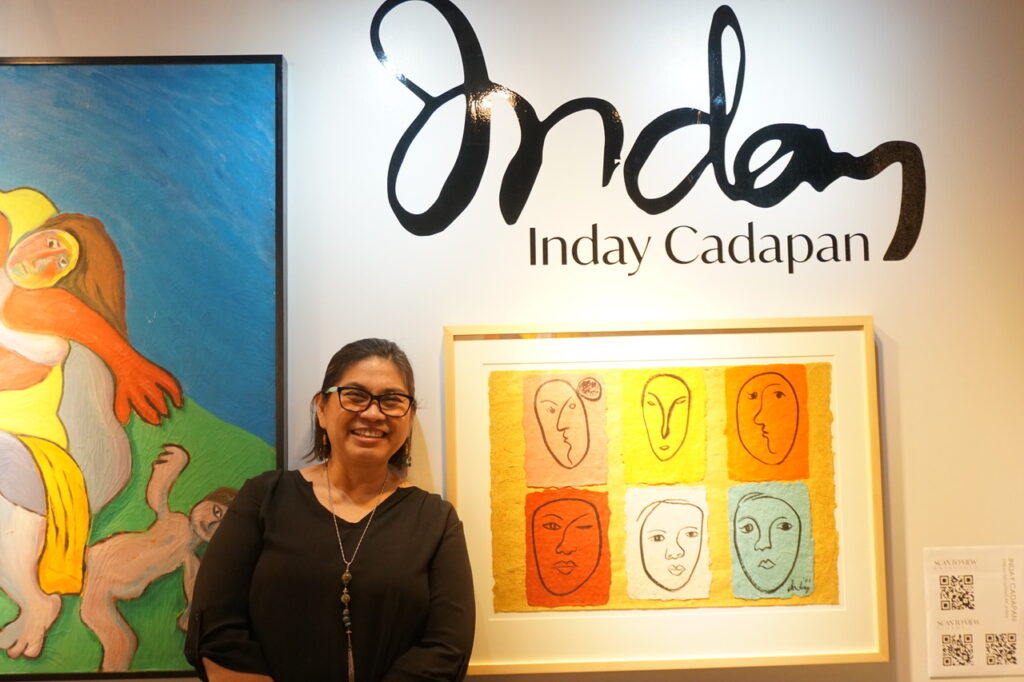
Inday’s Beginnings
Born in Negros Oriental on September 12, 1939, Inday Cadapan first became an antique dealer in 1974. While dealing with artworks, she also started reproducing local furniture, which became the first step in expressing her creativity.
It wasn’t until 1979 that Inday, despite the lack of artistic knowledge, used the canvas to voice her opinion about the country’s societal issues, especially about being looked down on as a woman and a Bisaya.
She learned by analyzing Kooning, Matisse and Picasso and created her signature art form full of simple lines and bright colors.
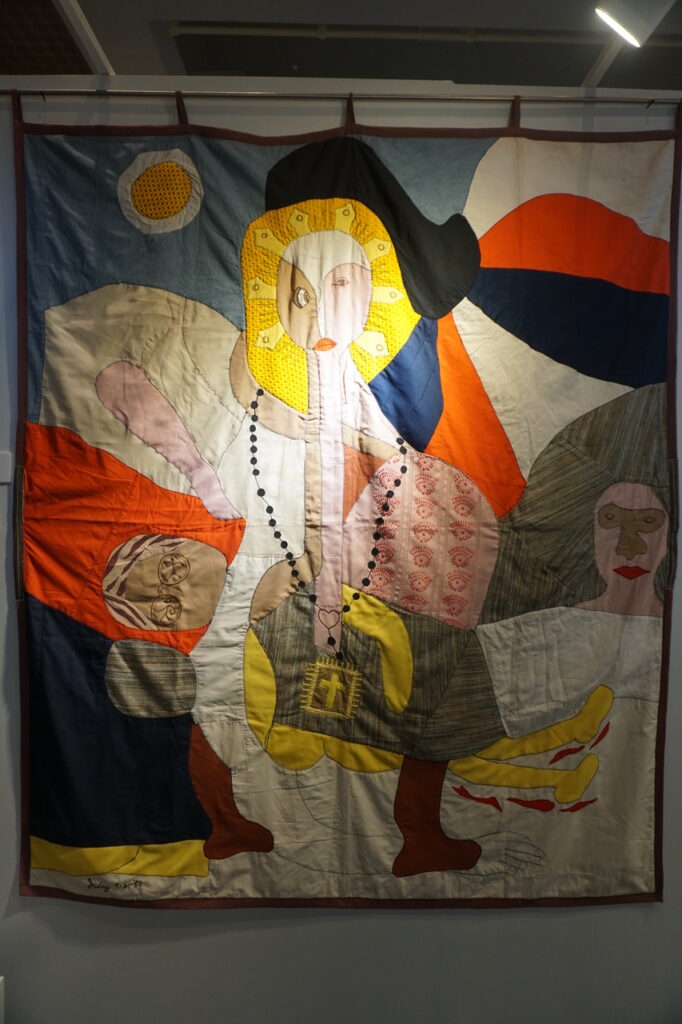
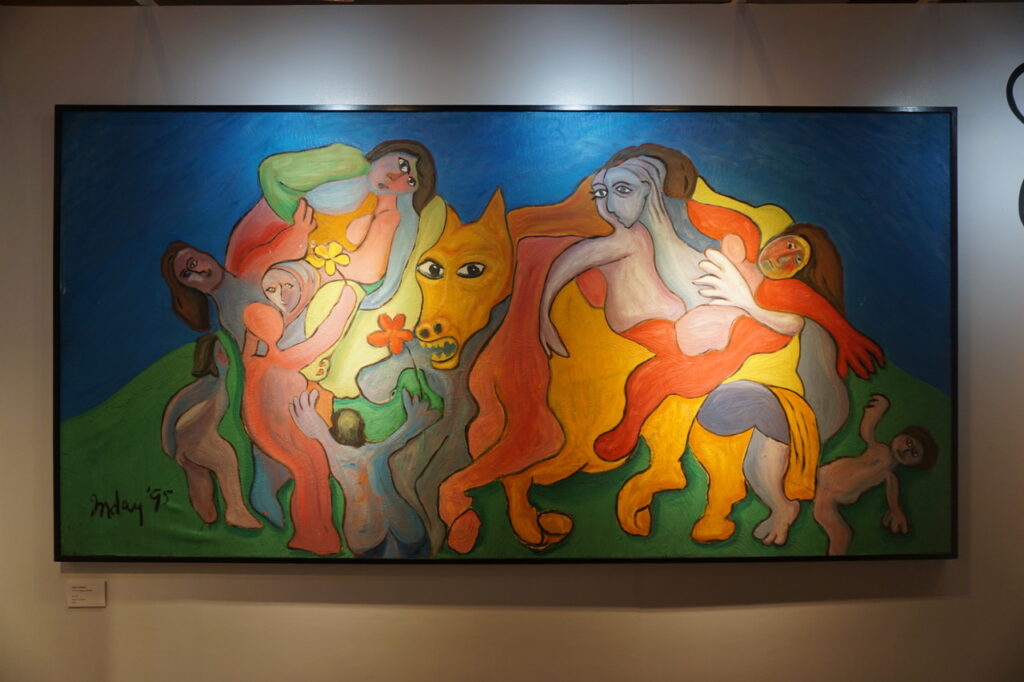
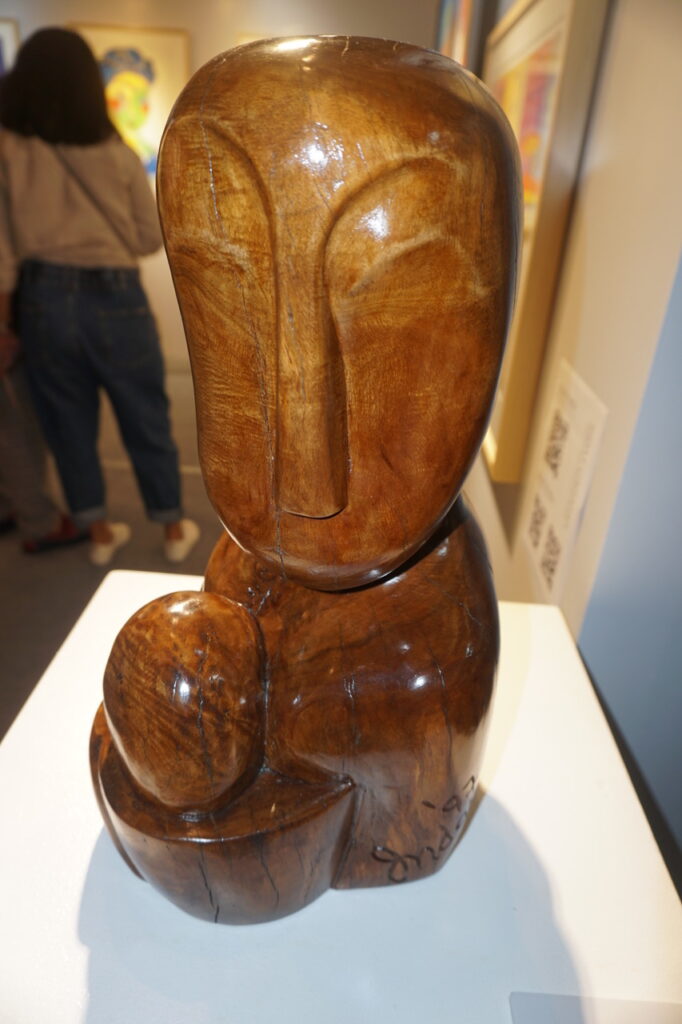
Magel recalled her mother’s straightforward creative process. “The first thing she does is pray, asking God what things to accomplish while holding a piece of paper, even if she already had thoughts in mind. Then dabs her brush into the paint, just the basic colors. Without a pencil,” she said in Filipino. As for her sculptures, Inday just relied on her assistant to carve what she wanted on wood.
And to finish her every masterpiece, she stamped her identity with ‘Inday.’ “To redeem and honor Visayan women,” Magel said.
‘Inday’ is not just the artist’s name, but also a term of endearment. “In Visayas, if you were called ‘Inday,’ you are their princess, their favorite,” she said.
As the years went on, Inday’s health continued to deteriorate. But she still painted the figures and colors she wanted to show, converting her melancholy into happiness. Magel said that art is her mother’s way to ease herself not from the sickness that might take her at any time, but more from the anxieties in life.
She later understood her mother through her art, including the struggles of being accepted as an artist. “I’m just a willing victim,” she said.
Preserving the Legacy
Magel, now taking care of Café Inday, their family home-slash-coffee shop in Antipolo, Rizal, which turned into an atelier for the public to visit, recalled learning from her mother how to become honest in sharing the stories of hopes, dreams and faith behind every painting and sculpture.
Aside from maintaining the café, Magel also supervised several exhibitions of her mother’s creations. At first, she admits that nobody wants to handle them, so she started joining bazaars instead. But nowadays, several art galleries have begun adopting the late Inday and her works.
“What I’m happy about is they are relaying her story more than telling her name kasi everything will pass away,” she said. She also said that people who are related to and inspired by the message in her mother’s art are more important. “Bonus na talaga ang selling, eh,” (“Selling her artworks is just a bonus.”) she added.
She kept what her mother had envisioned years ago – that her art becomes valuable, not just to her but also to her grandchildren and those seeking comfort and help.
Magel then remembered what her mother said to her before she passed away – that she was happy being accepted into the local art scene.
“I know she is happier right now in heaven dahil naka-express siya ng something na may hope,” she added, the emotion evident in her voice. (“…because she was able to express something that brings hope.”)
